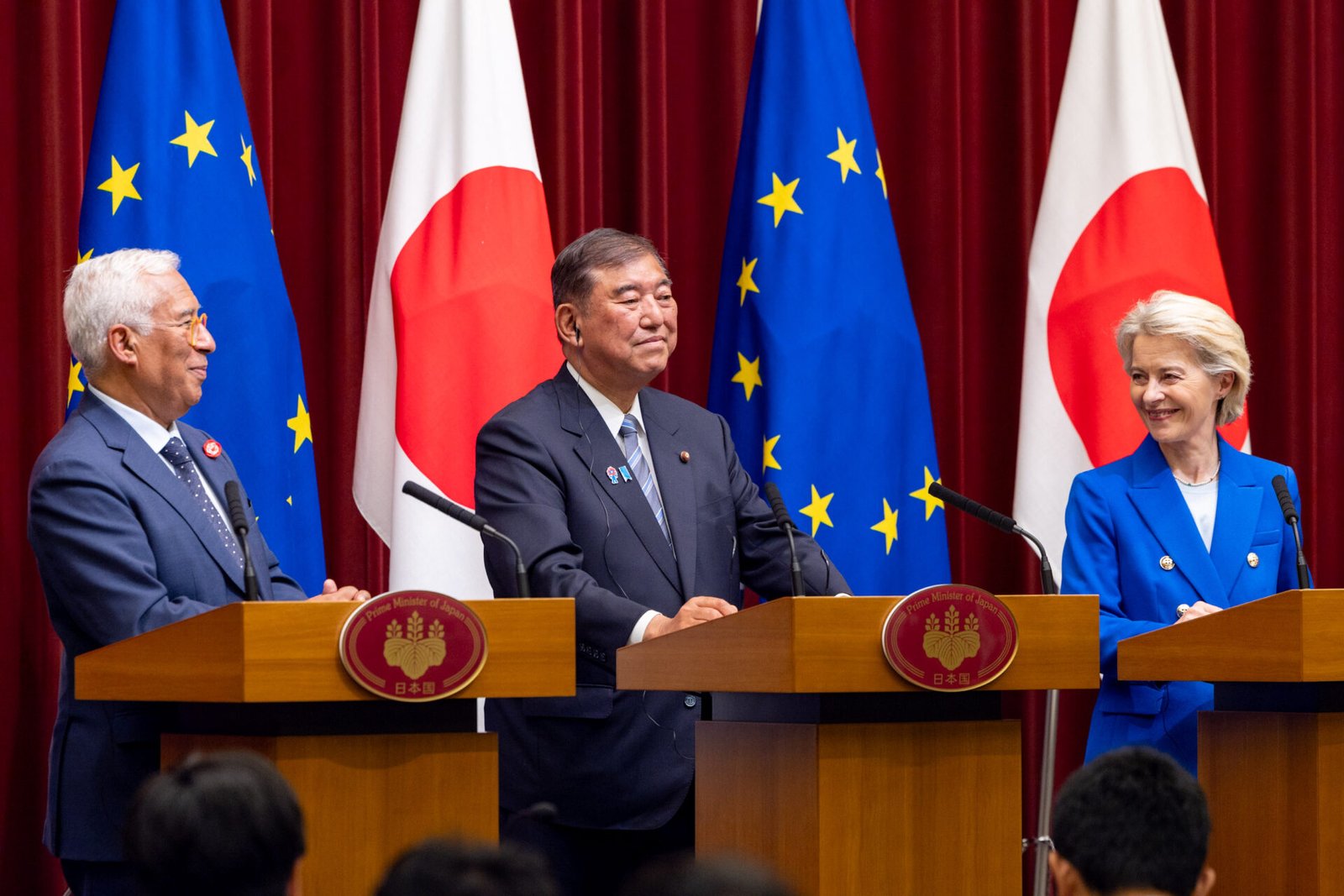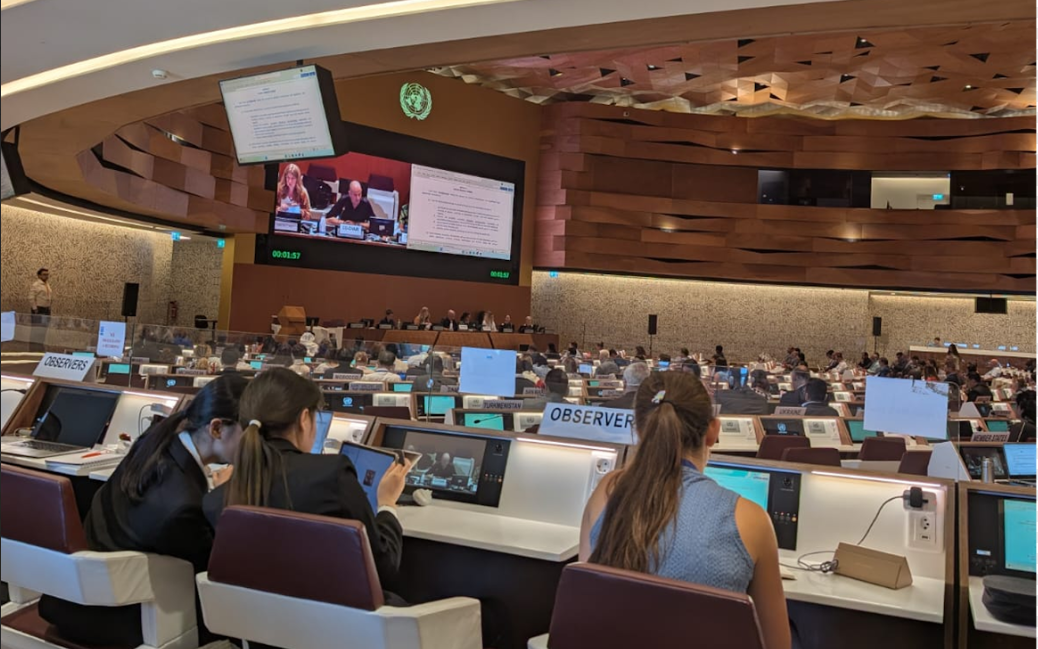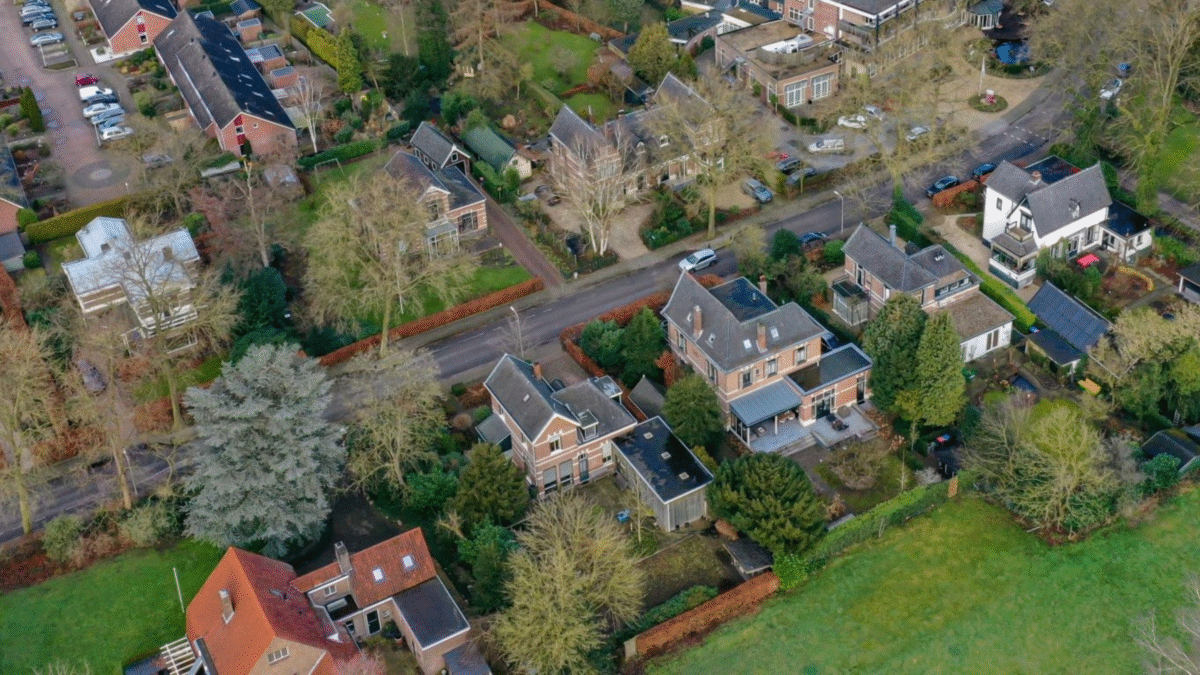The European Union and Japan—two global economic powerhouses—are strengthening their partnership with a clear focus on sustainability, innovation, and industrial resilience. The EU–Japan trade that has significantly increased since 2019 is constantly growing, with total rising to over €190 billion in 2024. Meanwhile goods trade reached €132.6 billion in 2024, which maintains a positive balance for the EU, while services trade grew by 42% since 2018 to €60 billion (European Commission).
During the recent High-Level Dialogue, both sides confirmed their shared environmental goals, followed by a summit that highlighted their joint ambition to drive green growth and build strong economies.
These engagements are part of a broader, multi-dimensional collaboration that includes fields of trade and economic security, climate and environmental policies, digital transformation and innovation. And now, in the light of global challenges—from climate change and energy insecurity to geopolitical tensions and technological disruption—this kind of partnership is more important than ever before. Strategic dialogue between the EU and Japan serves as a model for international cooperation and demonstrates how values-driven partnerships can lead to tangible solutions. And industrial cooperation is the best example of how such solutions can be delivered.
Strategic and policy foundations
At the heart of EU-Japan cooperation are two major frameworks: the Strategic Partnership Agreement (SPA) and the Economic Partnership Agreement (EPA). These agreements form the backbone of their relationship: they foster shared political values and drive trade and investment by cutting tariffs and easing regulatory hurdles. This partnership marks a joint commitment to global stability, sustainable growth, and a rules-based international order. Beyond that, the EU and Japan are also aligned in their sustainability ambitions.
The European Green Deal, launched in 2019, set the stage for a climate-neutral continent by 2050 - an ambitious, regulatory-heavy, and transformative strategy. But as the geopolitical and economic landscape evolved—marked by energy crises, inflation, and global competition—the EU adapted. The brand new Clean Industrial Deal sets a more pragmatic and industry-friendly tone while still keeping the climate ambition in focus. As a result, the new mandate of the Commission emphasizes simplification and promotes competitiveness and strategic dialogue.
Japan’s Green Growth Strategy, launched in 2020 and continuously updated, mirrors the European approach. It identifies 14 priority sectors—from hydrogen and carbon recycling to resource circulation and sustainable construction—and supports them with concrete action plans. The strategy is embedded in Japan’s broader Green Transformation (GX) policy, which sees decarbonization as a pillar of energy security and industrial strength. Japan, much like the EU, is translating its climate ambitions into concrete policies and sectoral action.
These shared ambitions were finally embodied in the EU–Japan Green Alliance as a milestone in bilateral cooperation. The alliance sets a common vision for achieving climate-neutral, circular, and resource-efficient economies by 2050. Moreover, both sides not only recognize the importance of regulatory coherence but actually advocate for a streamlined and internationally aligned regulatory environment that avoids unnecessary burdens on businesses. This vision goes hand in hand with the European Commission’s ongoing efforts to simplify and modernize industrial policy, and responds to the needs of businesses.
Business collaboration in action: case studies
A notable example of EU–Japan industrial collaboration in practice is the partnership between the member of the AGC Group, AGC Glass Europe, a global leader in glass production, and DOVISTA, a major European window and door manufacturer. Together, they are advancing decarbonization by integrating Low-Carbon Glass into DOVISTA’s production processes.
AGC’s Low-Carbon Glass offers a major environmental upgrade, with a Global Warming Potential of just 5.5 kg CO₂ eq. per square meter at 4mm thickness —almost half the impact of traditional float glass. By integrating this material into its production, DOVISTA is cutting down significantly on its Scope 3 emissions, which cover indirect emissions throughout its supply chain. These joint efforts demonstrate how industrial innovation can support regulatory compliance and sustainability targets.
Another impactful partnership involves AGC Glass Europe and ROSI, a French pioneer in photovoltaic recycling. They have been working together on developing circular and low-carbon production methods by recycling glass from end-of-life solar panels.
Given that solar panels are composed of approximately 70% glass, their recycling presents a major opportunity. Using recycled glass takes about 25% less energy than making new glass from raw materials, making it both cost-effective and better for the environment. Through this partnership, AGC and ROSI aim to recover and convert large volumes of photovoltaic glass for use in flat glass production. This helps to reduce waste, conserve resources, and lower the environmental footprint of solar technology.
Shared vision and action
The EU–Japan partnership stands as a model of how international cooperation can drive meaningful progress toward shared sustainability and competitiveness goals. Based on solid policy frameworks and a common vision for climate neutrality, both regions are aligning their regulatory strategies to foster innovation, circularity, and resilience.
The case studies of AGC Glass Europe’s partnership with DOVISTA and ROSI illustrate how high-level policy ambitions are being translated into tangible environmental and economic outcomes. As the EU and Japan continue to pursue their 2050 climate targets, their deepening collaboration not only strengthens bilateral ties but also sets a global benchmark for sustainable industrial transformation.
For more information please visit the AGC Glass Europe website: AGC Glass Europe







